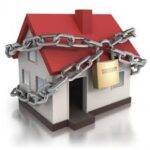Summer Home Safety Tips

Have big plans for this summer? Many families across Florida and the nation will spend time away from home during the summer months.
To fully enjoy those activities and other summertime pursuits spent away from home, homeowners should take precautions to protect their residences when they’re not around. Crime rates across the country often start to peak as temperatures rise during the warm weather months – the same time that many families leave their homes unoccupied and unprotected.
Homeowners can take these simple precautions to make their homes less of a target for criminals:
No “Home Alone”: Before leaving your home during the day, make it look as if someone is still at home by using timers on lights in various rooms. Even though daylight hours are longer during the summer, it may still get dark faster than you expect or you may return home later than anticipated, and taking this step ensures that your home appears occupied at all times.
No Sharing on Social Media: Sharing your vacation plans on social media sites isn’t wise. That’s the same as announcing to the world you’ll be gone and the house will be empty – a perfect target for burglars or vandals. The same goes for phone messages.
No Open-Door Policy: Ensure that all doors leading to the home and garage are locked, even when leaving for short periods of time. The typical burglary takes less than five minutes and unlocked doors, combined with an empty home, put out the “welcome mat” for crime. Make sure windows are locked, too.
Someone to Watch Over Me: Be landscape smart. Shrubbery and other plants can grow very rapidly during the warm, wet summer months. Keep them trimmed so neighbors can easily see your home. Also, a burglar could see an unkempt yard as a sign of an empty home.
A Key Reminder: When leaving home, take your house keys along or leave a spare set with a trusted neighbor. Never leave a key under a welcome mat, in a mailbox or other hiding spots – most burglars know where to look.
Crime Doesn’t Take a Vacation: If you’re planning to be away from home for more than a day or two, ask a neighbor pick up your mail and newspapers – or arrange to cancel the paper and hold the mail. Disable your garage door opener and manually lock it from the inside, and don’t forget to check that the door leading from the garage to the home is locked, too.











 Kim N. Bregman
Kim N. Bregman